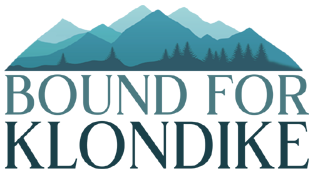
When you hear the name Yukon River, what comes into your mind? For most people, it is just an ordinary river in North America. It is a big watercourse which gives Yukon Territory its name. Yukon is a Gwich'in word which means "Great River."
Yukon River was one of the main pathways people traveled during the late 1800s well renowned Klondike Gold Rush. But what are the other things Yukon river is known for? Here are interesting facts about the Yukon River.
How Long is the Yukon River?
The Yukon River has a length of about 1,982 miles (3,190 km). In North America, it comes at position three in terms of length but it is the longest in the Yukon and Alaska. 715 miles (1150 kilometers) of the river is found in Canada while 1,267 miles (2040 kilometers) of it is found in Alaska.
River Yukon delivers about 227,000 cubic. ft (6,430 cubic. m) of water into the Bering Sea every second. The source of the river is in British Columbia from where it flows through Yukon and Alaska and ends at Yukon-Kuskokwim-Delta where it drains into the Bering Sea.
The Yukon-Kuskokwim-Delta is among the world's largest deltas. It measures about 50,000 sq mi (129,500 square km) in size; about the size of Louisiana state.
The Yukon–Kuskokwim Delta is a Protected Area
The Yukon Delta falls under the area protected by the National Wildlife Refuge protection. The Yukon–Kuskokwim Delta is mainly composed of tundra characterized by poor nutrients, little precipitation, low temperatures, and landscapes that are molded by frost.
The watershed or drainage basin for the river comprises of a total of 321,500 square miles (832,700 square km) of North America, putting it at number four in the whole continent. The watershed is approximately 20 percent bigger than Texas.
History of River Yukon Watershed
The Indians from North America solely inhabited the River Yukon watershed region until the 19th C. when some European descendants began to arrive in this area. These included some explorers from the Russian Empire. They first came in to trade in fur but later started searching for minerals.
The main means of transportation during the Gold Rush that took place in Klondike from 1896 to 1903 was River Yukon.
Many people used paddle-wheel boats and this trend continued until the late 1950s and only stopped after the completion of the Klondike Highway.
The tributaries of River Yukon include the Big Salmon, Teslin, Stewart, Pelly, Porcupine, Klondike, and Koyukuk which are found to the eastern and northern banks, and the Tanana, White, and Takhini which are to the southern and western banks.
In 1897, Alaska was purchased by the US and a company called Alaska Commercial Company built up many business centers at several posts along the Yukon River. This happened as the company took over the assets of a Russian-American Company that was operating in this area.
There Are Only Four Bridges Across River Yukon that Can Carry vehicles
River Yukon is very long and, surprisingly, there are only four bridges across it that can carry vehicles. There is a ferry at Dawson City that can carry cars across the river in the summer. During the winter, the river gets frozen and the ferry has to be replaced by a big ice bridge.
Salmon Runs
The Yukon River experiences salmon runs every year. The salmon runs here are among the longest in the world. Every year Chinook, chum, and coho salmon travel back to their British Columbia, the Yukon Territories, and Alaska terminal streams forming very spectacular runs.
The Yukon River also boasts the world's longest fish ladder. The ladder is made of wood and is located at the Whitehorse Fishway. It measures about 1,200 feet (366 m) and it helps the Chinook salmon on the final stretch of their migration.
Salmon are very important for those who live along the Yukon River. They rely on them mostly for their commercial, subsistence, and cultural needs. They smoke the salmon, dry or freeze them for their consumption and also for their sled dogs.
The common fishing methods used by the villagers here include fish wheels, dip nets, drift nets, and gillnets.
Want to Visit Yukon Territory?
Many tourists flock the Yukon area every year mainly because it provides many tourist attraction sites. Some also do because of its historical ties to the Gold Rush. The Yukon Territory is sparsely populated, isolated, and has many breathtaking scenes. It is a great area if you want to escape from the crowded cities in America.
You'll get to see the moose, gray-haired bears, and wolves at the edge of the river. The beavers and otters grace the waters while some beautifully-colored bluebirds, golden eagles, and ospreys grace the skies. Many hotels provide the best accommodation and food in this area.
